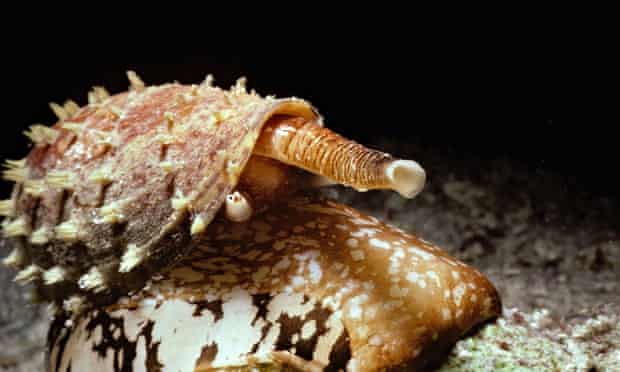The ocean is home to some amazing creatures, from the cute and cuddly to the terrifying and scary. The deep-sea creatures on this list are the latter. It’s very likely that you will never meet any of these horrifying monsters because they live in the depths of the ocean where sunlight cannot reach them and humans are unable to explore easily. But that won’t stop you from being terrified of them at night when you’re lying in bed thinking about them.
Giant Pacific Octopus
Contents

The average adult size for a giant Pacific octopus is around 15 pounds and 15 feet in length. Giant Pacific octopuses can live up to three years and grow very quickly, reaching sizes of 100 pounds within their first year of life. These creatures are incredibly strong and will sometimes bite human divers. Unfortunately, they are difficult animals to study because they spend much of their time far below on the ocean floor with only their tentacles exposed at sea level.
Sunfish
Just looking at a sunfish will have you thinking of Jurassic Park. While they’re not big enough to take down a T-Rex, they still make for an imposing sea monster. The largest bony fish in existence, these fish can weigh up to two tons and reach lengths of 10 feet. Their numbers are declining due to overfishing and increased demand for their liver oil, which is used in cosmetics and cooking oil.
Lion’s Mane Jellyfish

Its name comes from its long, trailing tentacles that can reach up to 200 feet long. Some scientists have described it as looking like a lion’s mane floating through your nightmares. Worse yet, they use their tentacles to trap small fish and crustaceans while they suck out their innards, leaving only an empty shell behind. Yum? Only if you’re really weirded out by living candelabras. Still afraid of sea creatures?
Bobbit Worm
The Bobbit worm (Eunice aphroditois) is a carnivorous marine worm that can grow up to three feet long and ten inches wide. It eats other invertebrates, mostly crabs and small fish. While it is relatively harmless, it produces quite a bite with its parrot-like beak and set of sharp teeth in both its mouth and along its body.
Anglerfish

One of three things can happen when you meet an anglerfish: The fish might explode, it might attack you, or it might try to lure you in with its light. But probably at least one of those three things will happen. That’s a pretty good success rate for an animal that lives over half a mile deep. At least it seems like a pretty high success rate until you realize that means that out of every 100 encounters with anglerfish, about 90 end in death or injury.
Megamouth Shark
The Megamouth Shark gets its name from its unusually large mouth. This shark, which is rarely seen by humans, can have a 24-inch jaw and 36 inch girth. Although it is one of the least aggressive sharks, it is also one of least understood creatures in deep waters.
Cone Snail

There are about 600 species of cone snails, and all of them live in tropical seas. These are slow hunters, but when their prey comes by, they inject them with venom that paralyzes its victim. The cone snail then sucks out its meal alive. Some species have eyes on their antennae for sight and some have light sensors so that they can hunt at night.
Vampire Squid
This creature may have evolved from a jellyfish more than 300 million years ago, but it’s one of the few creatures that can survive in freezing cold waters near Antarctica. It survives because of its special blood that has three different layers: red blood cells, a yellowish layer with hemoglobin and finally an outer layer made of brown pigment called melanin. The red blood cells carry oxygen through thin channels in its body and deliver it directly to organs like heart and eyes.
Giant Isopod

While a good deal of information has been gathered on how Humboldt squid hunt and interact with one another, there are still many things about them that remain a mystery. To fully understand these animals, scientists must observe them in their natural habitat; but because they live at such extreme depths, taking trips down into their world is both expensive and dangerous. This means that research into these creatures is limited; we don’t know as much about them as we do about other species of squid.
Humboldt Squid
The Humboldt squid is so creepy it’s been dubbed the zombie squid. They have huge eyes, are covered in light organs that flash with colored lights, and have sharp beaks. The most frightening thing about them, though, is their size: they can grow up to five feet long! Scientists don’t know a lot about these strange creatures since they live in such deep waters and aren’t frequently seen. However, researchers studying them reported something very unusual.



GIPHY App Key not set. Please check settings